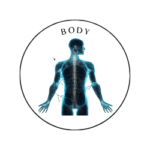 Mind
Mind
- Digital and Modern Well-being
- Mental Health and Emotional Well-being
- Mind-Body Connection and Holistic Health
- Parenting and Family
- Personal Growth and Development
- Relationships and Social Well-being
- Stress and Relaxation
- Therapeutic and Creative Practices
- Trauma and Recovery
- Work, Productivity, and Discipline
 Body
Body
 Fitness
Fitness
 Food
Food
 Beauty
Beauty
Best Cardio Exercises for Heart Health

Best Cardio Exercises for Heart Health
Cardiovascular (cardio) exercises are essential for maintaining heart health. They strengthen the heart, improve blood circulation, reduce the risk of heart disease, and promote overall cardiovascular efficiency. By raising your heart rate and keeping it elevated, these exercises help your heart become more efficient over time, reducing strain and enhancing endurance. Below is a guide to some of the best cardio exercises for heart health, along with tips for maximizing their benefits.
1. Brisk Walking
Why It’s Great: Walking is a low-impact, beginner-friendly exercise that doesn’t require special equipment. Brisk walking (walking at a faster-than-normal pace) elevates the heart rate without putting too much stress on the joints, making it accessible for most fitness levels.
How to Do It:
- Aim for a pace where your heart rate increases, but you can still carry on a conversation.
- Walk for 30–60 minutes, at least five times per week.
- To increase intensity, add hills or incline, either outdoors or on a treadmill.
Benefits: Brisk walking can lower blood pressure, improve circulation, and boost your energy levels.
2. Cycling
Why It’s Great: Cycling is a fun, low-impact exercise that can be done indoors on a stationary bike or outdoors. It’s easy on the joints and provides a great way to improve heart health and strengthen the lower body.
How to Do It:
- Cycle at a moderate pace for 30–60 minutes, three to five times per week.
- For an extra challenge, try interval cycling by alternating between high and low intensities.
Benefits: Cycling helps reduce bad cholesterol levels, lowers blood pressure, and improves cardiovascular fitness.
3. Swimming
Why It’s Great: Swimming is an excellent full-body workout that provides cardiovascular benefits without putting strain on the joints. It’s ideal for those with joint pain, arthritis, or injuries, as the water supports your body, reducing impact.
How to Do It:
- Swim continuously for 20–30 minutes, gradually working up to longer sessions.
- Experiment with different strokes (freestyle, breaststroke, backstroke) to engage various muscle groups.
Benefits: Swimming improves heart health, enhances lung capacity, and builds endurance and muscle strength.
4. Running or Jogging
Why It’s Great: Running is a high-intensity cardiovascular exercise that significantly increases heart rate, improves endurance, and burns calories. Whether you prefer running outdoors or on a treadmill, it’s one of the most effective ways to boost heart health.
How to Do It:
- Start with a warm-up walk or slow jog for 5–10 minutes.
- Aim to run or jog for 20–45 minutes, depending on your fitness level.
- For variety, incorporate intervals by alternating between a faster pace and a slower recovery pace.
Benefits: Running strengthens the heart, reduces blood pressure, and improves overall cardiovascular endurance.
5. High-Intensity Interval Training (HIIT)
Why It’s Great: HIIT workouts involve short bursts of high-intensity exercises followed by brief rest periods. This type of training is highly efficient for improving cardiovascular fitness in a short amount of time and is known to boost metabolism.
How to Do It:
- Choose an exercise (like sprinting, cycling, or jump rope) and alternate between 20–30 seconds of intense activity and 10–20 seconds of rest.
- Repeat the cycle for 15–30 minutes, depending on your fitness level.
- Ensure a proper warm-up and cool-down to avoid injuries.
Benefits: HIIT improves cardiovascular health, enhances endurance, and boosts calorie burn due to the “afterburn” effect, where your body continues to burn calories post-exercise.
6. Rowing
Why It’s Great: Rowing is a full-body, low-impact exercise that strengthens the heart while engaging major muscle groups, including the legs, back, and core. It’s excellent for those who want a high-intensity workout with minimal joint impact.
How to Do It:
- Use a rowing machine (or row in the water if you have access).
- Aim for 20–30 minutes, keeping a steady pace or trying interval rowing by alternating between high and low intensity.
- Focus on good form to avoid strain and maximize benefits.
Benefits: Rowing improves heart health, increases stamina, and strengthens muscles across the body.
7. Jump Rope
Why It’s Great: Jumping rope is an effective cardiovascular workout that raises the heart rate quickly. It’s a high-impact exercise, so it’s best for those with healthy joints, but it offers a lot of heart health benefits in a short time.
How to Do It:
- Start by jumping rope for 1–2 minutes, gradually working up to longer durations.
- Incorporate intervals or mix up the jumping style (e.g., single leg, double unders) to vary intensity.
- Aim for 15–20 minutes to start, working up to longer sessions as fitness improves.
Benefits: Jumping rope improves cardiovascular health, coordination, and agility while burning calories efficiently.
8. Dancing
Why It’s Great: Dancing is a fun, social activity that also serves as a great cardio workout. Many styles, from Zumba to salsa, provide a full-body workout that elevates heart rate while engaging various muscle groups.
How to Do It:
- Choose a style or class you enjoy, such as Zumba, hip-hop, or Latin dance.
- Aim for 30–60 minutes of continuous dancing, or break it up with short intervals of high-intensity moves.
- Dancing at home or in a class both offer heart health benefits.
Benefits: Dancing improves cardiovascular fitness, balance, and coordination and releases endorphins that support mental well-being.
9. Hiking
Why It’s Great: Hiking combines cardiovascular exercise with the benefits of being outdoors, which can reduce stress and improve mood. Hiking on varied terrain also challenges the heart and works muscles differently than flat-surface exercises.
How to Do It:
- Start with short hikes on easy trails and gradually work up to more challenging routes with inclines.
- Aim for 30–60 minutes, but longer hikes also provide excellent cardiovascular benefits.
- Bring water, wear good footwear, and pay attention to your pace to avoid exhaustion.
Benefits: Hiking improves cardiovascular endurance, builds leg strength, and lowers stress.
10. Elliptical Training
Why It’s Great: Using an elliptical machine provides a low-impact, heart-friendly workout that’s easy on the joints. Most elliptical machines have options to adjust intensity, resistance, and incline, making it customizable for any fitness level.
How to Do It:
- Warm up for a few minutes on low resistance, then gradually increase intensity.
- Aim for 20–40 minutes, alternating between high and low resistance for added intensity.
- Incorporate intervals or use the machine’s pre-programmed workouts to vary the routine.
Benefits: Elliptical training enhances cardiovascular fitness, improves endurance, and tones the lower body while minimizing joint impact.
Tips for Maximizing Heart Health Benefits
Frequency: Aim for at least 150 minutes of moderate-intensity cardio or 75 minutes of high-intensity cardio per week, as recommended by the American Heart Association.
Intensity: For maximum cardiovascular benefits, work within your target heart rate zone, which is typically 50-85% of your maximum heart rate. You can calculate your maximum heart rate as 220 minus your age.
Consistency: Regular, consistent exercise is key for long-term heart health benefits. Try to engage in cardio activity most days of the week.
Variety: Mixing different cardio exercises can prevent boredom and work different muscle groups, making your routine more effective and enjoyable.
Listen to Your Body: While cardio exercise is beneficial, it’s important not to overdo it. Rest and recovery are essential for muscle repair and avoiding burnout.
Conclusion
Cardio exercises are invaluable for heart health and overall wellness. By incorporating activities like brisk walking, cycling, swimming, and HIIT, you can keep your heart strong, reduce the risk of heart disease, and improve your physical fitness. Choose activities you enjoy and gradually increase intensity and duration to continue challenging your heart and reaping long-term benefits.
